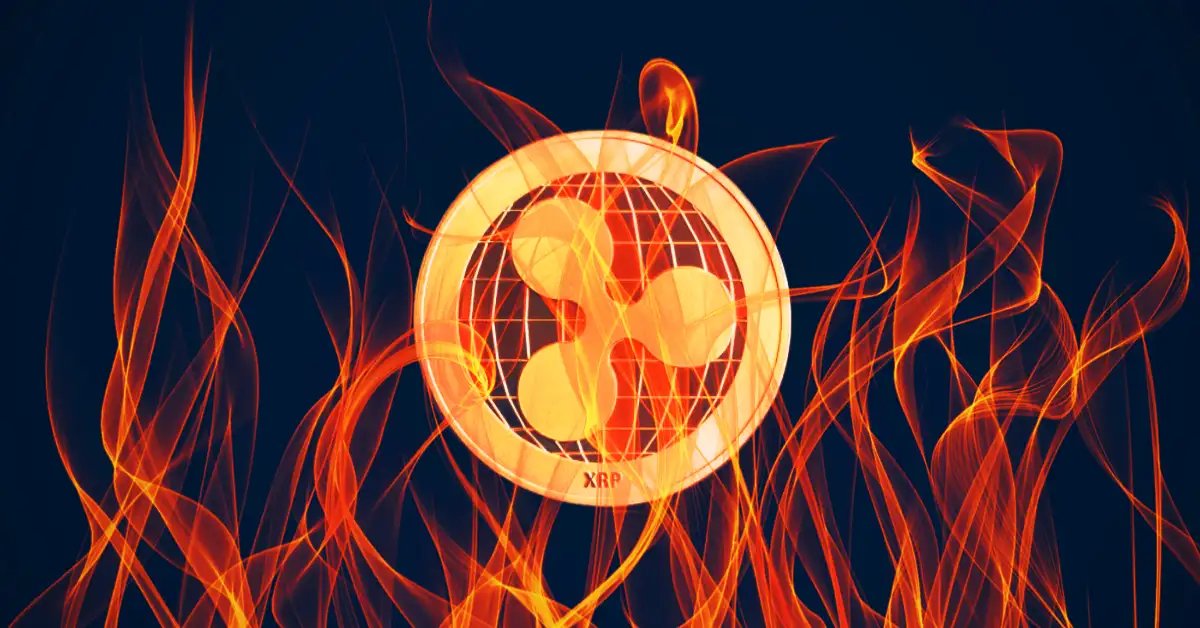What is the looming power shift between ETH and XRP?
Since Ethereum’s Merge update in 2022, the network’s transition to a deflationary model has steadily reduced the supply of Ether (ETH), increasing its scarcity and reinforcing long-term investor confidence.
The reduced supply has elevated ETH beyond a simple utility token, positioning it as a potential store of value within the broader cryptocurrency ecosystem. In contrast, XRP (XRP) has carved out a distinct role as a bridge asset, facilitating instant cross-border liquidity for banks and global payment networks.
However, if ETH’s deflationary rate slows, its scarcity advantage could weaken. In the scenario XRP emerges as the leader in global liquidity flows, a significant shift may follow. Such a reversal could reshape the dynamics of the cryptocurrency sector. It could influence institutional adoption, payment systems, market valuations, competitive positioning and the broader future of blockchain-based finance.
Did you know? Ethereum introduced smart contracts in 2015, paving the way for decentralized applications (DApps), non-fungible tokens (NFTs) and the broader decentralized finance (DeFi) ecosystem.
How ETH’s deflation works and if it could turn inflationary
ETH’s deflationary nature originates from Ethereum Improvement Proposal (EIP) 1559, which introduced a fee-burning mechanism. Under this system, a portion of each transaction’s base fee is permanently removed from circulation rather than distributed to miners or validators.
During periods of high network activity, the amount of ETH burned can exceed the ETH issued as staking rewards, leading to net deflation. This trend, which intensified after the 2022 Merge, has steadily reduced the total supply of ETH.
As users increasingly adopt layer-2 solutions, such as Arbitrum and Optimism, transaction activity on the Ethereum mainnet has declined. This has resulted in lower gas fees and reduced burn rates. At the same time, validator rewards have increased, boosting the issuance of new ETH.
If the burn rate continues to fall while staking rewards remain high, ETH could gradually turn inflationary again. Such a shift may weaken its scarcity-driven value proposition. It could help stabilize prices in the short term but undermine Ether’s long-term position as a deflationary store of value.
Did you know? In 2022, Ethereum transitioned from proof-of-work to proof-of-stake, reducing its energy consumption by more than 99%.
How XRP compares with ETH
XRP’s advantage lies in its role as a liquidity bridge for banks, fintech firms and global payment providers. Through RippleNet and its On-Demand Liquidity (ODL) service, XRP enables near-instant cross-border settlements without the need for pre-funded accounts.
While ETH’s value is largely driven by deflation and staking rewards, XRP’s long-term stability depends on its transaction utility and institutional adoption. Key liquidity indicators highlight XRP’s strength in settlement speed, transaction costs and energy efficiency, while Ethereum maintains a broader ecosystem and higher onchain activity.
In the context of global remittances, XRP’s interoperability and cost efficiency give it a strong position. It could achieve liquidity dominance if ETH’s deflationary trend weakens in the years ahead.
Here’s a table illustrating how XRP Ledger compares with Ethereum:
Market scenarios: If ETH loses deflation, who wins?
As Ether’s deflationary model faces increasing pressure from declining burn rates and rising validator rewards, capital flows among major cryptocurrencies could begin to shift. Three potential scenarios could play out.
Scenario 1: Ether turns inflationary, prompting capital to move toward XRP or stablecoins.
If ETH’s supply starts to expand, investors seeking stability may redirect capital toward yield-generating stablecoins or utility-driven assets such as XRP. These assets offer consistent transactional value.
Scenario 2: XRP strengthens its role in cross-border payments, leading to a shift in liquidity leadership.
If XRP secures broader institutional adoption through ODL and International Organization for Standardization (ISO) 20022-compliant networks, it could become a primary channel for global settlements. This shift may draw liquidity away from Ethereum-based transactions.
Scenario 3: Both assets coexist with distinct roles, with ETH as DeFi collateral and XRP as a payments infrastructure.
In a balanced outcome, Ethereum would maintain its leadership in DeFi and smart contracts, while XRP would operate as the backbone of institutional liquidity. Together, they could form a complementary dual-asset framework supporting both DeFi ecosystems and real-world payment systems.
Did you know? Around 70% of DeFi projects and NFTs are built on the Ethereum blockchain, making it the core of Web3.
ETH’s scarcity fading vs. XRP’s regulatory clarity
For investors and institutions, any change in ETH’s supply pattern could prompt a fresh look at portfolio strategy. If ETH loses its deflationary edge, capital may flow toward assets that offer stronger liquidity and clearer regulatory footing.
XRP holds a clearer legal standing, having been deemed a non-security in certain jurisdictions, which supports its institutional use in compliant cross-border payments. ETH, meanwhile, still faces regulatory uncertainty around staking and token classification. This contrast could influence institutional liquidity preferences.
As a result, investors may adopt a more mature and risk-aware approach to cryptocurrency allocation. This could mean retaining ETH for exposure to DeFi and innovation while increasing holdings of XRP for transactional stability and regulatory clarity.
Source: https://cointelegraph.com/explained/what-happens-if-eth-stops-being-deflationary-and-xrp-becomes-the-global-liquidity-benchmark?utm_source=rss_feed&utm_medium=feed%3Frand%3Dxf0q1_1762644054171%26nc%3D1762644054171%26ttt%3D1762644054171%26_%3D1762644054171&utm_campaign=rss_partner_inbound


